Types of canopies
Before picking up the tool, the canopy over the porch should be designed. Therefore, let’s start by studying the features of each type and shape.
Corner
If the entrance door is located at the corner and there is a perpendicular adjoining wall close to it, the structure can be fixed to the corner and both walls. This ensures the strength of the frame and increases the area of the shelter.
The canopy over the porch is used to cover not only the door, but also the nearest window, stairs or street lamp.
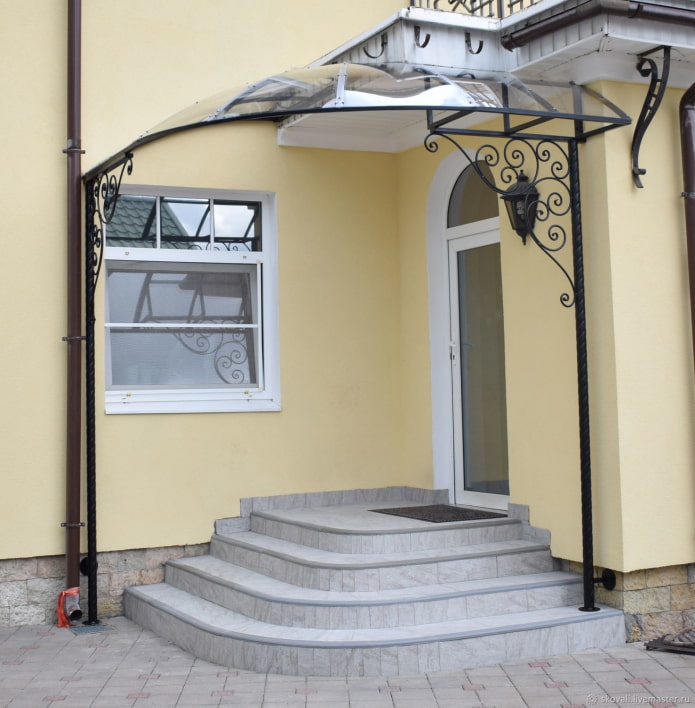


Straight
Such a canopy over the entrance is installed if the entrance door is located in the center of the facade or on its outer corner.
Small-sized options are attached to the wall itself on massive corners, larger and heavier ones require supports. Sometimes the fastening is combined – corners on the facade + 2 posts on the part farthest from the entrance.



The photo shows a straight canopy with a slight slope
Semicircular
One of the simplest shapes after a straight canopy over the entrance is a semicircle. The angle of inclination is achieved not by installing it diagonally, but by a smooth bend. That is, the highest point is located near the wall, the lowest – on the outer edge.
The main disadvantage of the “awning” shape is that water drops after rain flow down directly onto the approach path or steps – this means that you will not be able to enter the house without getting wet.
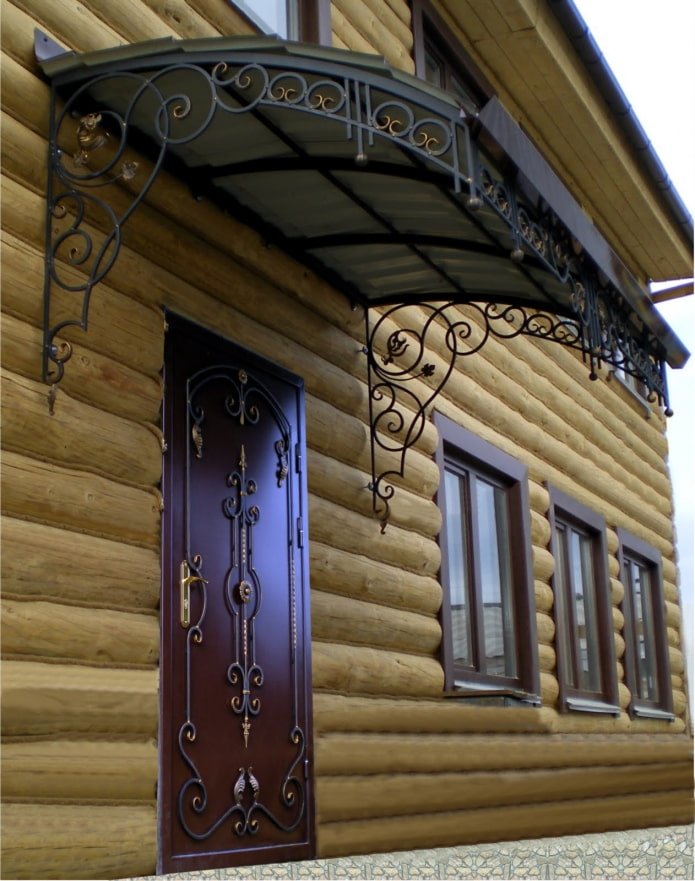
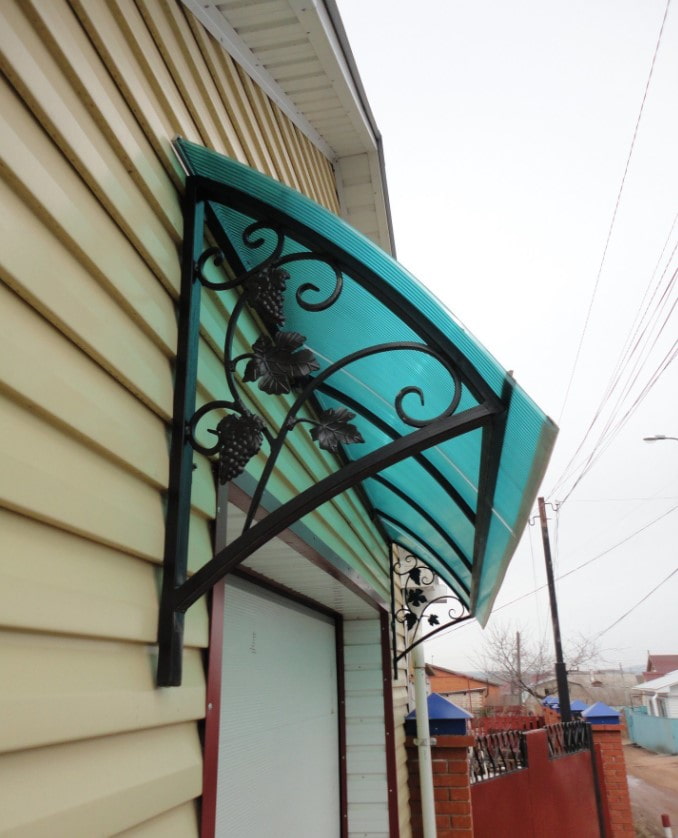

The photo shows the “marquise” shape with forged trim
Three-pitched
Just like the roofs of private houses, canopies over entrance groups can be single-pitched (at an angle), double-pitched (house-shaped) and three-pitched.
The latter are a symbiosis of the first two – they have 2 slopes at the edges and one in front. This is where the disadvantage of a three-pitched canopy comes from – during precipitation, drops, as in the case of a semicircular canopy, flow down onto the trajectory of a person’s movement.
But such an angular canopy over the porch looks very stylish and dynamic, and the problem of running water can be solved with the help of a simple drainage system along the front side.

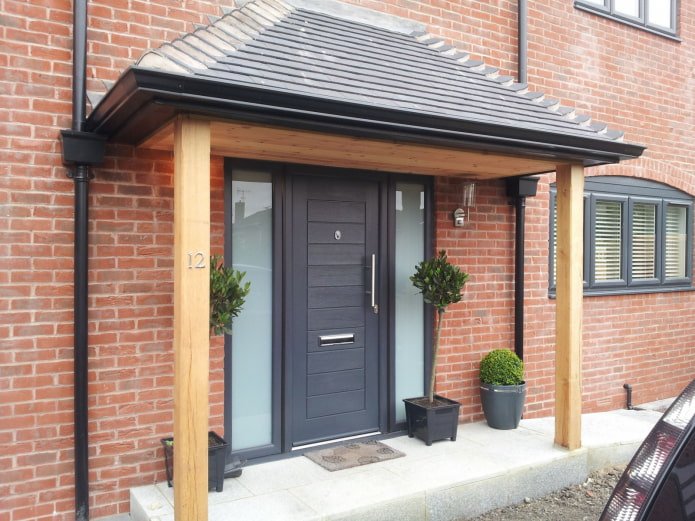
Round
Arched canopies over the porch to the house are free from the disadvantage of the two previous types – their slopes are located on the sides, which means it will be comfortable to approach the door.
But due to the lack of a front wall, a new problem arises – the canopy does not block the sun, which is opposite the entrance. Therefore, before choosing a shape, check how your house is located relative to the sun’s rays.
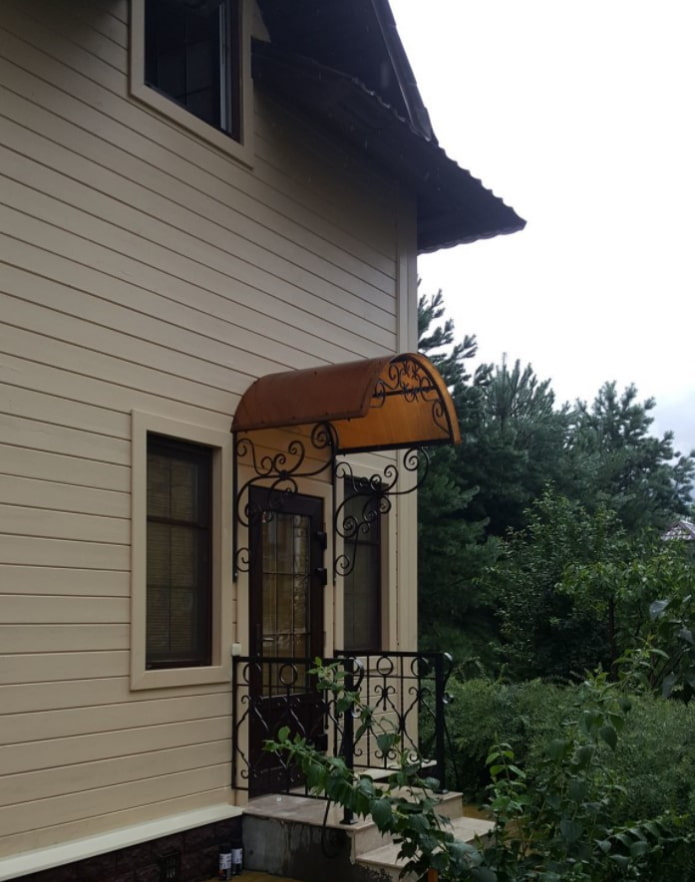
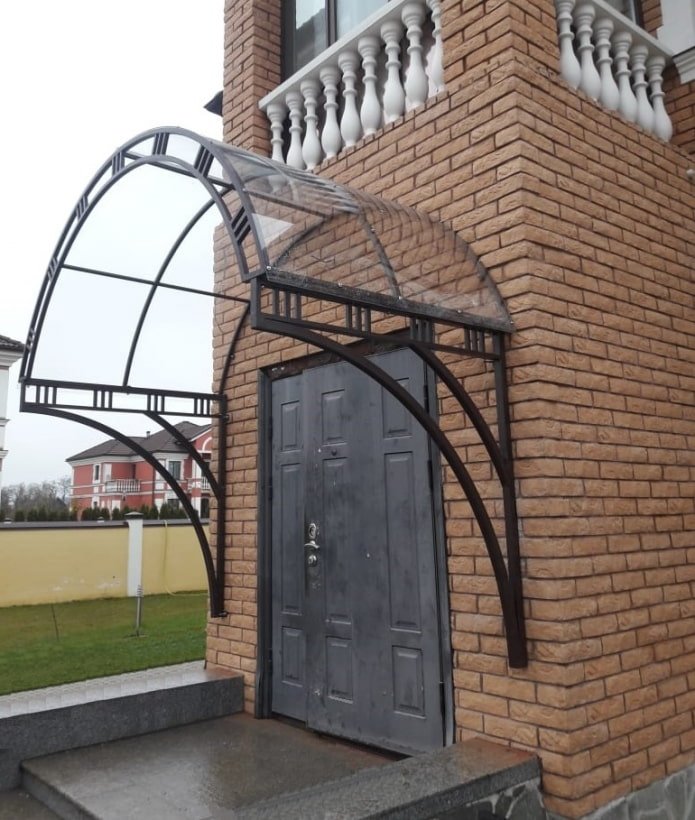
Dome
A dome-shaped canopy over the porch looks stylish and original. Most often it is a quarter of a sphere, but if necessary, the shape can be made more elongated.
Water flows down all sides, but the decorative appearance allows you to close your eyes to this functional drawback.

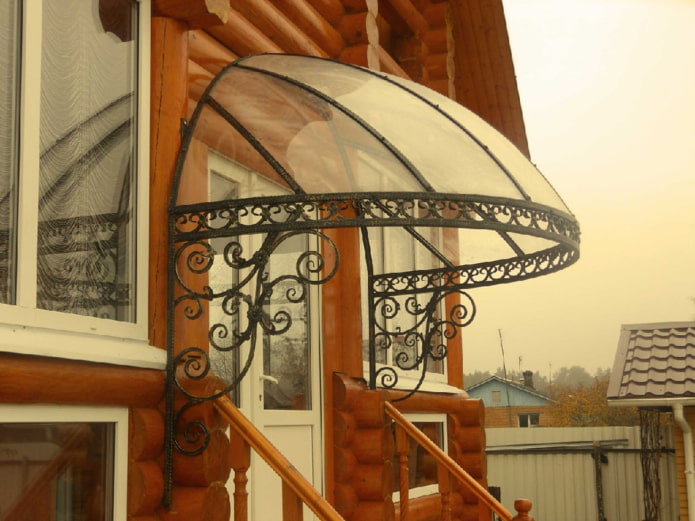
The photo shows a transparent dome over a wooden porch
Complex shape
If simple The canopies above the entrance are not impressive, you can come up with something more original: for this, elements of different types are combined with each other. For example, the canopies above the porch in the photo below combine a single-pitched view with a gable view, a straight canopy with an arched one.

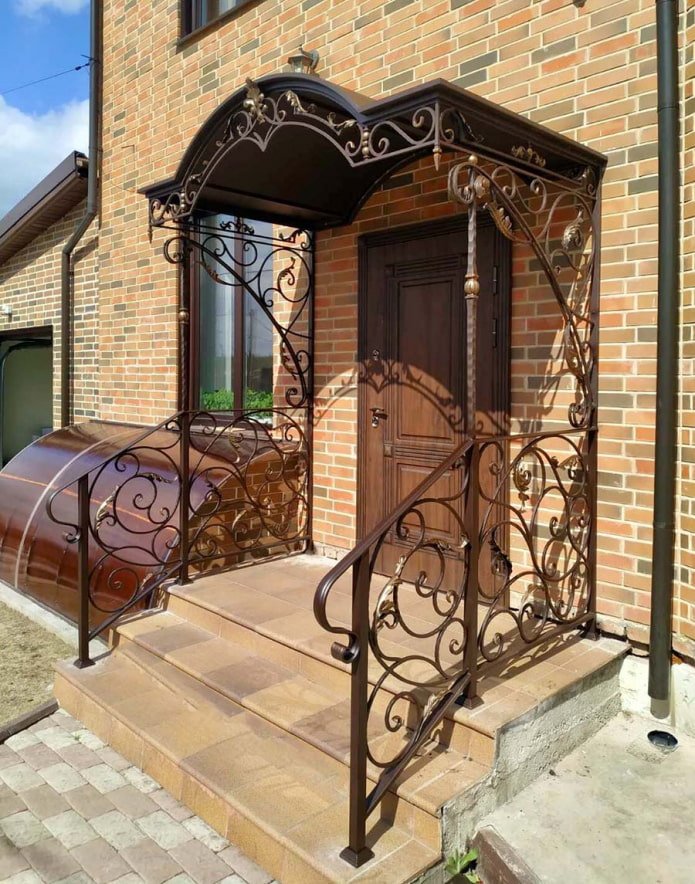
What materials are they usually made of?
Once the shape and style of the future canopy have been determined, it remains to decide what to make its base from and choose the covering.
Metal roofing tiles
Making canopies from this material is the most popular because:
- a canopy over a porch goes well with a roof made of the same metal roofing tiles;
- the material is not afraid of the sun, precipitation and temperature differences;
- retains its original appearance for many years;
- does not require special care and maintenance;
- is easy to install on any base (wood or metal).
A big minus of a metal canopy is noise. You can still put up with raindrops, but when an apple or something similar falls on the roof, the rumble will be very loud. This disadvantage is solved by proper soundproofing.

Ondulin
A light, practical roofing material has replaced the old impractical slate and has almost completely ousted it from the market. Ondulin is used to cover houses, cottages, baths, outbuildings and, of course, sheds.
Advantages of Euroslate:
- wide range of colors;
- easy installation;
- light weight;
- reasonable price;
- noise absorption;
- water resistance.
Among the disadvantages – lower (in comparison with metal tiles) strength, durability, flammability. In addition, the material fades in the sun, so after a while there will be no trace of the bright canopy.
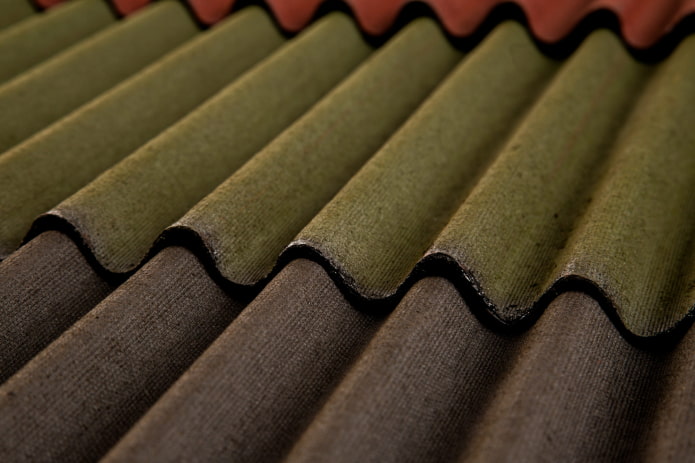
Polycarbonate
Special monolithic polycarbonate is used for awnings – cellular polycarbonate will not work in this case.
The advantages of thermoplastic include its transparency (the porch will be light), flexibility (an ideal option for arched, semicircular, domed canopies), lightness (suitable for any base).
The disadvantages of a polycarbonate porch canopy follow from its origin: the plastic “walks” with temperature changes, fades in the sun, and scratches. The latter is especially noticeable, since the roof is transparent.
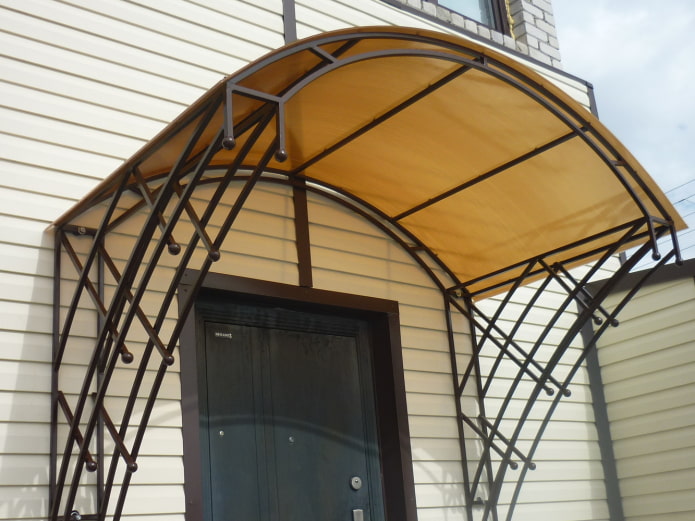
The photo shows a combination of polycarbonate and metal
Wood
Eco-friendly natural wood is at the peak of popularity, so it will suit not only a chalet-style country house, but will also fit into the exterior of a modern cottage. Making a wooden canopy over a porch is easy and quite inexpensive.
But when choosing wood as the main material, you need to be prepared for regular maintenance: about once a year you will have to cover the wood with special impregnations that protect against moisture, insects, and fungus.
Often, wooden elements only serve as supports, and the roof is covered with something more suitable – for example, corrugated board.
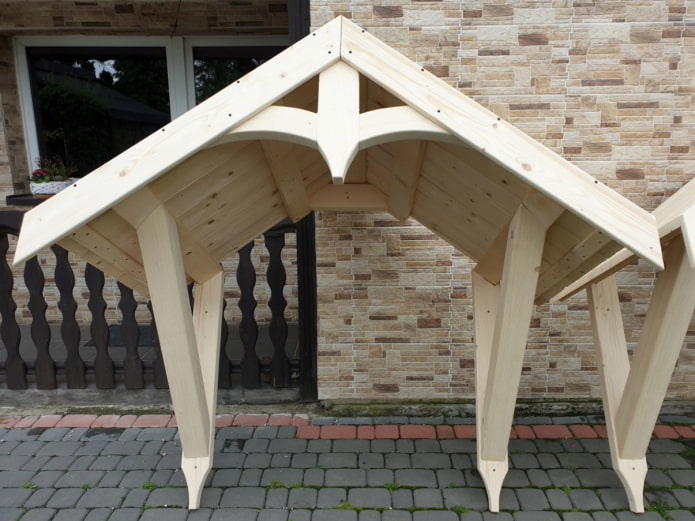
Corrugated board
This roofing material differs from metal tiles primarily in price. But when betting on a favorable price, do not forget about the likelihood of rust, as well as problems with sound insulation.
If the above nuances do not bother you, choose corrugated sheets. For a small price, you will get a durable coating that is not afraid of snow, rain, UV rays.
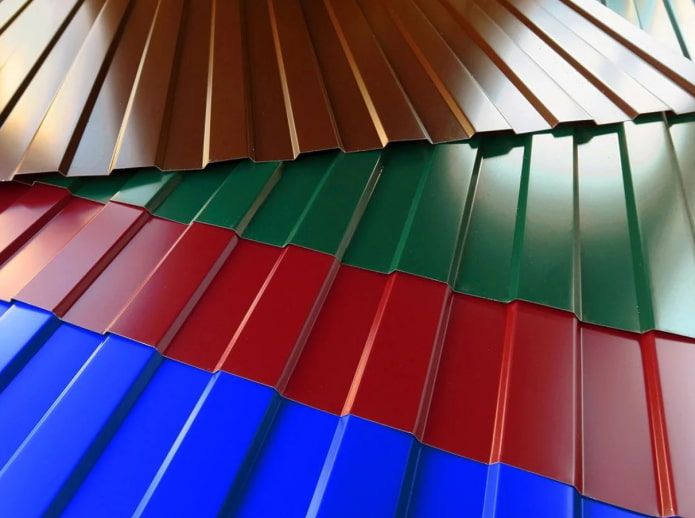
Forged canopies
Perhaps, forged canopies can be called the most spectacular! Due to the virtually limitless possibilities of forging, the design can be absolutely anything – from classic curls to romantic flowers or original abstraction.
Forged structures have a margin of safety, a long service life and are not afraid of atmospheric surprises in the form of hail or gusty wind.
Forged canopies are covered with metal tiles, ondulin, polycarbonate. But the most stylish forged canopies are obtained by combining metal with transparent glass.

Glass
Transparent canopies over the porch literally float in the air. Due to the visual lightness of the material used, the structure does not weigh down the facade, does not attract unnecessary attention, and copes with the task with 5+.
For awnings, only tempered glass is used: reliable, safe, and in appearance is no different from standard glass – it also lets in light.
The only downside is the difficulty of washing. After rain, streaks will be visible on the glass roof, which must be regularly removed to maintain an aesthetic appearance.

The photo shows a minimalist structure made of glass and metal
How to do it yourself?
For self-manufacturing of a canopy over the porch, we have prepared a simple option for a canopy with a roof made of corrugated board or polycarbonate.
Step-by-step instructions
Work on a canopy made of corrugated board takes place in 3 stages:
- Preparing the base.
- Installation bases.
- Roofing.
Since the sheets are quite light, the base can be made of welded or forged metal, as well as wood. The latter is the easiest to do – you will not need special tools or skills, it is enough to have a saw, a small number of nails with a hammer or bolts with a key and a screwdriver.
- Measure the place where the canopy will be attached.
- Draw a project on paper or in a special program on the computer, taking into account the dimensions of all the elements.
- Saw the necessary parts.
Important! The wood must be pre-treated with a protective compound!
- Assemble the frame.
- Attach it to the wall.
Important! If necessary, dig in pillars from the outside – in this case, you need to start with them and not install the canopy until the concrete has completely dried.
The last step is laying the sheets themselves. They are attached to the lathing with self-tapping screws, two sheets are placed on top of each other with an overlap of one division.
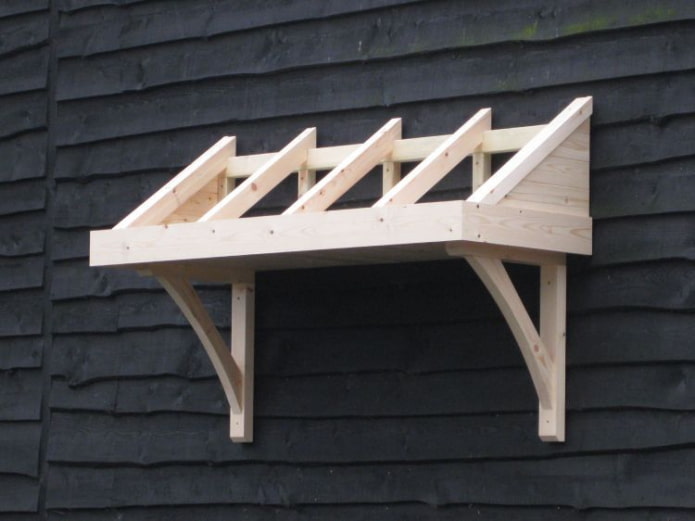
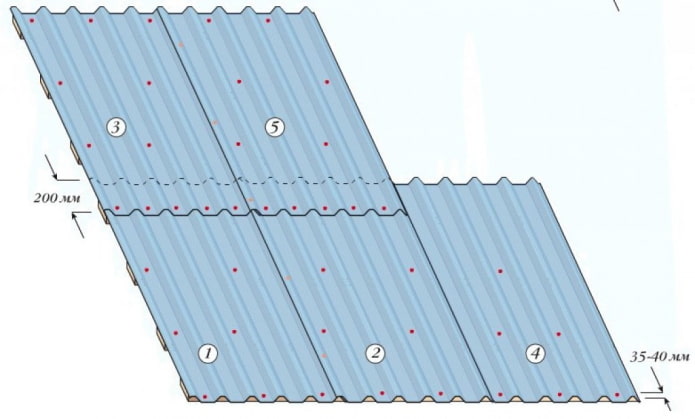
Video
From the video instructions, you will learn how to weld the base for the canopy and attach polycarbonate sheets to it:
Beautiful examples for inspiration
The spectacular appearance of the canopy largely depends on the base: welded or forged structures covered with tinted glass or polycarbonate are an ideal option that will fit into any style and will become a decoration of the site.

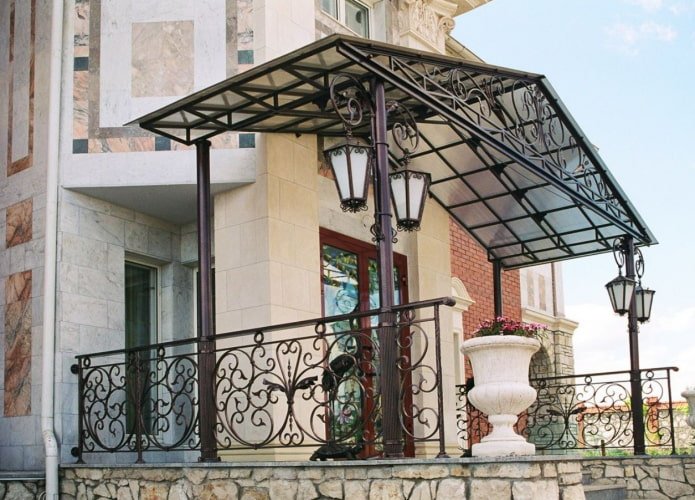

The second option is to play with shapes or colors. For example, a canopy in the shape of a wave or a wonderful shell is a wonderful accent of the exterior.
As for color, play on contrast. A dark canopy looks better on a light wall, and on a dark wall, on the contrary, a light or colored one.

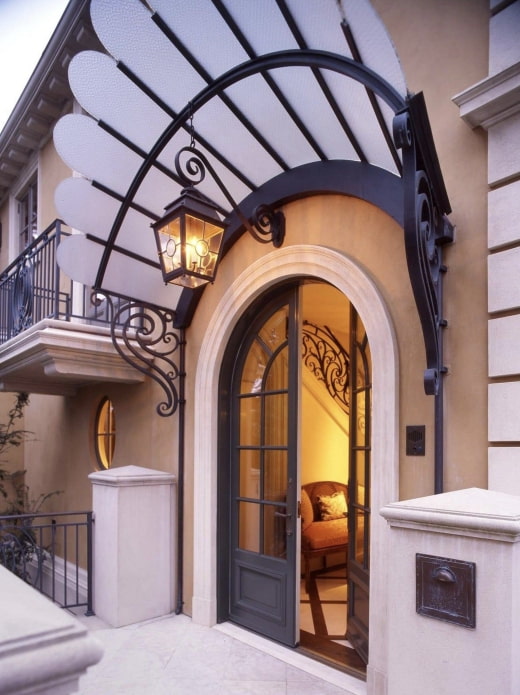
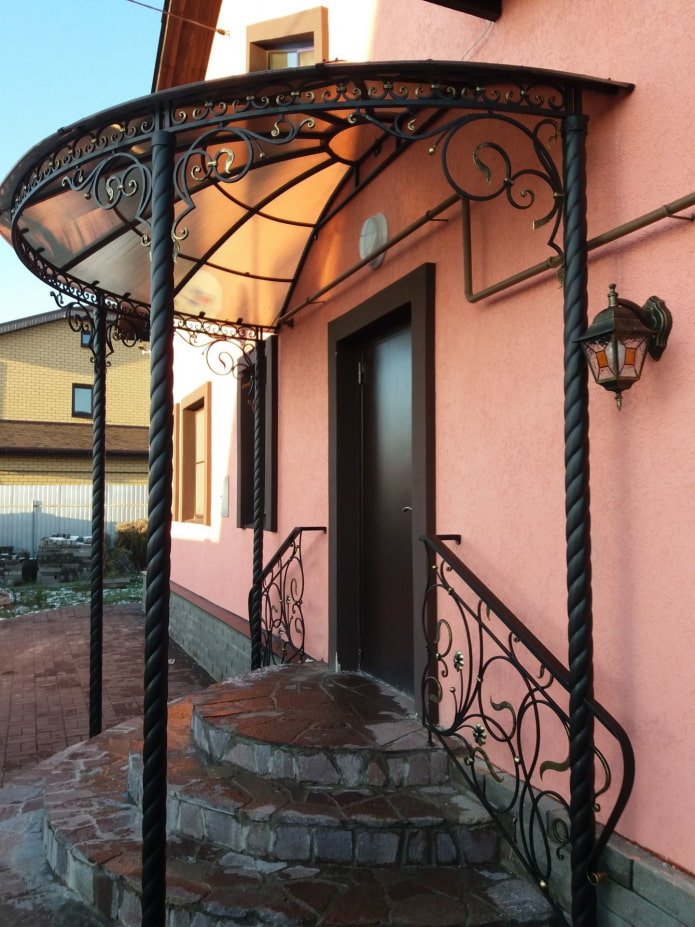
When designing a small entrance group, try to combine aesthetics and functionality: then the view of the porch will please for many years to come.
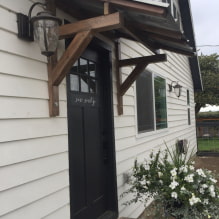
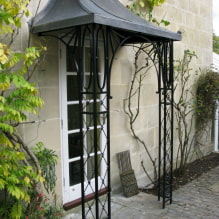
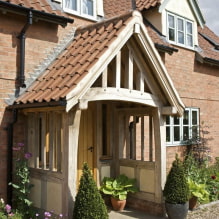
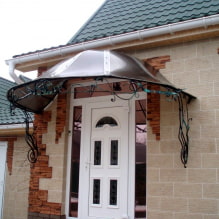
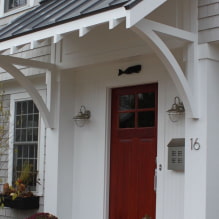
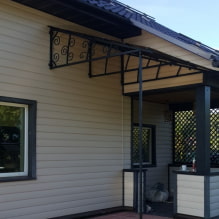
Now reading:
- Narrow Corridor: 45 Photos of the Hallway and Stylish Design Ideas
- Mint Kitchen: 40 Inspiring Photos and Design Solutions.
- Discover the All-New Mercedes SL: Luxury Redefined
- 41 Inspiring Mediterranean Kitchen Photos: Best Design Ideas
- Marsala color in the interior: 40 photos, combinations and methods of application.